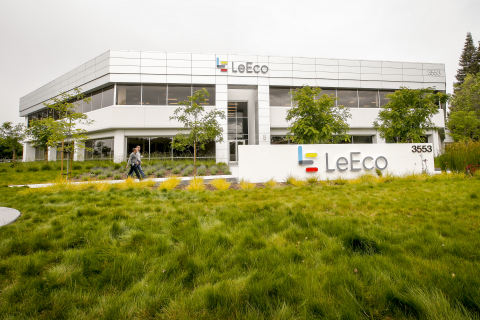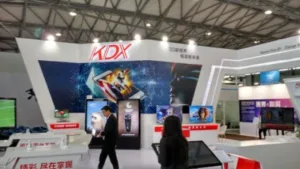While 3D is hard to find at CES USA, it was quite visible and seemingly popular at CES Asia. As with many companies in China, it is often difficult to know who the true manufacturer is and who is a repackager or a reseller of the same basic technology. Many often showed the same content too, and with the language barriers, it is difficult to know the geneology of these displays.
Although we did not hear the Alibaba keynote debut, Yin Jing, president of Alibaba Group’s Tmall 3C and Home Appliance Business Unit, gave the audience a sneak peek of how Alibaba will help customers shop online in the future with 3D technology using their smartphone. It is not clear if this is a 3D model of a click and mortar store that consumers can navigate around in an augmented reality app, or if it will actually render stereoscopic images that can be viewed on the glasses-free 3D displays in smartphones.
Below is a summary of some of the top companies exhibiting at the event.
KDX acquired Dutch company, Dimenco, after a cooperation so the Dimenco technology forms the basis of their glasses-free 3D displays (Dimenco Acquired by KDX). On display were several large portrait kiosks showing zoo animal content along with some Porsche ads and other advertisements. These displays are described as 2D/3D switchable, but this is not likely to be an actively switchable lenticular lens array. More likely, this means that for 2D content, the same image is displayed for the left and right eye images essentially making it a flat auto-stereoscopic image. This was not shown on any devices as they wanted to highlight the 3D aspects, of course.

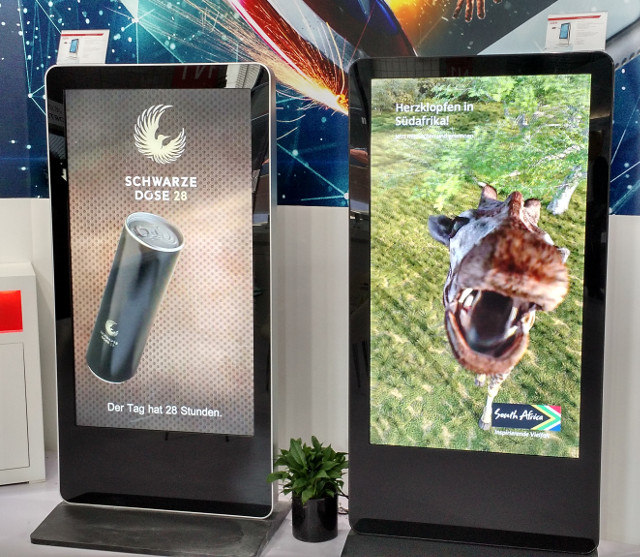
There were also a 55” and a 65” stand alone landscape displays with UltraHD resolution. UltraHD makes a big difference in image quality compared to the FHD displays. These are 28-view models that have smooth transition zone but not a lot of depth. Content that is too far out of screen quickly defocuses, so Dimenco always liked to keep the depth budget modest to minimize this effect.
The 65” model lists at 30,000 RMB (~$5,000) while the 55” sell for about a 30% premium over a comparable 2D TV model, and is sampling now. KDX is offering these on an OEM basis and will also offer their own branded 3D TVs and displays.
A prototype eye-tracked laptop demo was also on display that was two view and offered good depth volume and secure tracking.
PPTV, a content and device platform provider in China, was showing off 3D smartphones, which they actually call 2.5D phones. It features a 6” screen with1440x2560 resolution and seems to have a lenticular overlay. There is undoubtedly automatic 2D to 3D conversion. We watched several of the clips offered for viewing and found the image quality was poor with severe judder. While the transitions were smooth, it was easy to be in a transition zone and see a fuzzy image.
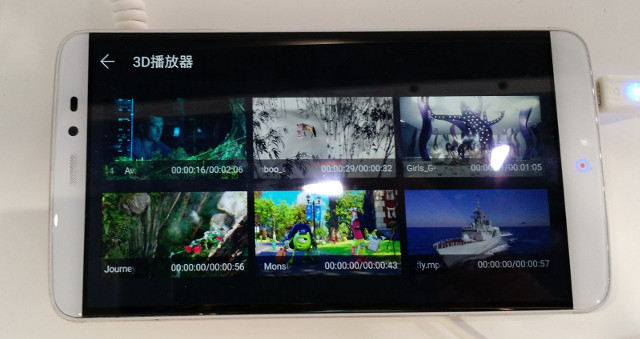
3DI is a Chinese company offering large format and smartphone 3D displays based upon lenticular technology. On display in their booth was a 3×3 and 1×3 video walls using 46” panels as well as a stand alone 65” panel. Smartphone 6” displays were also being showcased.
The 3×3 wall was not too impressive. The displays were dim and it was hard to see the whole image in focus from any one spot – a common issue with large glasses-free 3D displays. While the transitions were quite smooth, there was not much depth volume in the images.
A single 65” display had way too much reflection making it difficult to watch in the bright environment, but the 1×3 wall was probably the best in the booth. The 3×3 wall sells for 800,000 RMB ($122,000), the 1×3 is 400,000 RMB ($61,000) and the single 65” display is 60,000 RMB ($9,150).

We evaluated some content on the phones and found that moving from zone to zone, there was a very noticeable dark region between them. We are not sure if that was intentional, but it does help to be sure you are in the sweet spot. These displays also had too much glare and the 3D image looked like cardboard cutouts. 3DI says you can adjust the depth volume, which was not too bad.
The phones will be launched in July using their own brand name – CRE-Z.
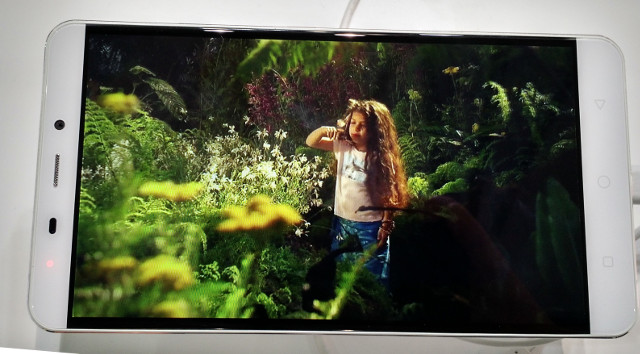
LeTV, now called LeEco, was showing a giant 120” 4K TV with active shutter glasses-based 3D content. There was flicker present but the 3D was pretty good. This sells for a mere 500,000 RMB (~$85K).
